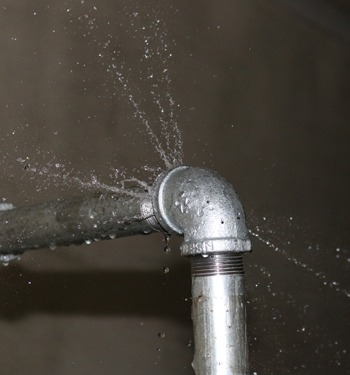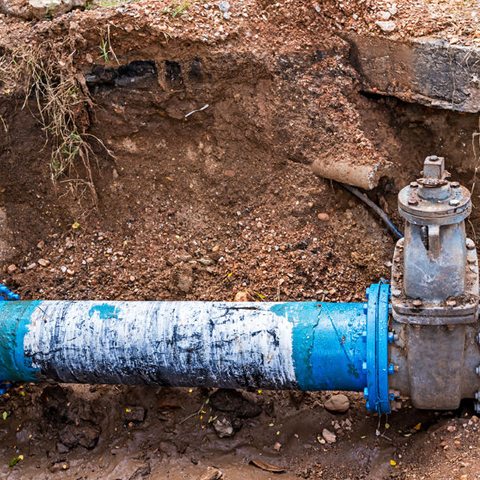How do you actually feel about How to Install and Connect a New Dishwasher?

A burst pipe is a significant emergency; you can only stand as you see water you pay very much to rejoin with the earth. In even worse situations, you see a swimming pool on your cooking area floor, which is a great journey hazard, particularly if you have children around. If the pipeline that ruptured was in your walls, problem: you may need to paint that entire section.
Just how can a disaster like a ruptured pipe be protected against as well as taken care of? Well, by listening to your expert emergency plumbers as well as adhering to these rules.
Exactly how do I recognize when my pipes have ruptured?
Fluctuating water pressures
Pipelines do not simply burst in a day. You may have discovered that your cooking area faucet or shower doesn't run promptly when you turn the faucet. It might stop for a few seconds and after that blast you with even more pressure than usual.
In other circumstances, the water may seem regular in the beginning, then decrease in stress after a few seconds.
Damp walls and water spots
Prior to a pipe bursts, it will leak, a lot of times. If this persistent dripping goes undetected, the leakage might finish right into a wide gouge in your pipe. One simple method to avoid this emergency is to look out for wet walls ad water stains. These water spots will lead you right to the leak.
Puddles under pipes as well as sinks
When a pipeline ruptureds, the discharge creates a pool. It might show up that the pool is expanding in dimension, as well as despite the amount of times you wipe the pool, in a couple of mins, there's one more one waiting to be cleaned up. Commonly, you might not have the ability to map the puddle to any type of visible pipelines. This is an indication to call an expert plumber.
Untraceable leaking noises
Pipe bursts can take place in one of the most undesirable locations, like within concrete, inside walls, or under sinks. When the house goes silent, you might have the ability to listen to an irritatingly consistent leaking noise. Even after you have actually examined your shower head and also kitchen area tap, the dripping might proceed.
Beloved viewers, the leaking may be coming from a pipeline inside your walls. There isn't much you can do about that, except inform a specialist plumber.
Shut off the Water
When water freezes, it expands in quantity by concerning 9 percent. As well as it expands with tremendous pressure: The pressure inside pipes might go from 40 extra pounds per square inch to 40,000 psi! No pipeline can hold that much pressure, so it bursts. The break might occur where the ice kinds, however more often, it occurs where water stress discovers a vulnerable point in the pipe. That might be inches or even feet from the icy area. Find the water shutoff valve and also shut off the water to prevent even more damages. You may additionally require to shut off the electricity too, depending upon where the leaks takes place and also just how huge it is.
Contaminated water
Lots of people assume a ruptured pipe is a one-way outlet. Quite the contrary. As water drains of the hole or wound in your plumbing system, contaminants locate their method.
Your water might be infected from the resource, so if you can, examine if your water tank has any type of problems. Nevertheless, if your drinking water is supplied and also purified by the city government, you ought to call your plumber immediately if you see or smell anything funny in your water.
What do I do when I spot a ruptured pipeline?
Your water meter will certainly remain to run also while your water wastes. To decrease your losses, find the major controls and also transform the supply off. The water mains are an above-ground structure beside your residential property.
How to Fix & Detect a Leaking Pipe
How Do I Know if a Pipe is Leaking?
Leak detection tests can help you determine if your pipe has a leak. Even if you don’t see an apparent leak, you should still conduct leak detection tests regularly to save water and money—and prevent major damage to your home.
Water meter. It can be helpful to figure out what your usual water meter usage numbers are and then monitor them regularly. To monitor your meter, first, turn off all water faucets in your home. Check the meter and write down the numbers. In a few hours, check the meter again. If the numbers have changed, you have a leak. Water gauge. Use a water gauge to test your water pressure. Your showerhead should produce a certain amount of water pressure based on its model and design. If the pressure is lower than it is supposed to be for that specific showerhead, your home likely has a leak. Puddles. Look inside your bathroom, laundry, and kitchen sink cabinets. Puddles around the cabinets or around toilets, tubs, showers, and washing machines indicate the presence of a leaking pipe. You may also notice loose tiles, peeling or flaking paint, or mold caused by water accumulation. Napkin test. Even if you don’t see any puddles, you may still have a leak. You can test for water leaks in the bathroom, laundry, and kitchen by wiping below-sink connections with a napkin, paper towel, or piece of toilet paper. If it becomes damp, you probably have a leaking pipe under the sink. Discolored walls. Walls that are discolored—usually with brown or yellow stains—or bulging might mean that they have been impacted by water damage caused by a leaking pipe. Smell. A leaky pipe will create sitting water, and over time, that water may develop a musty smell. If your home smells musty, but you can’t locate the source, it may be due to a leak. Steps for Fixing a Leaking Pipe
A leaky drain can be remedied by tightening the pipe base, replacing the drain seal, caulking the rim, and tightening the pipe nut. Similarly, a leaking toilet pipe can be treated by tightening the packing nut. You may also need to replace the valve. A leaky faucet may just need tightening or replacement of the washers. If that doesn’t work, consider replacing your faucet. If your pipe has a hole in it, you may want to use a pipe leak sealer or pipe leak tape. This quick fix for water pipe leaks can also temporarily fix a copper pipe leak. https://www.ahs.com/home-matters/quick-tips/how-to-tell-if-pipes-are-leaking/

As a passionate person who reads about How to Install and Connect a New Dishwasher, I figured sharing that excerpt was sensible. In case you appreciated our blog posting please make sure you remember to pass it around. I cherish reading our article about How to Prepare for Your Dishwasher Installation.
Book A Service